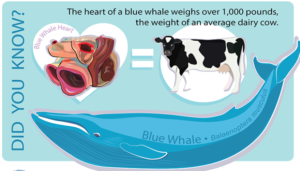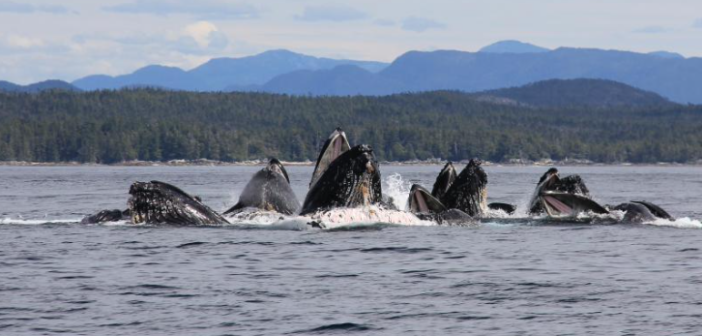You may have missed the news here (there’s a lot going on in the world), but this is Whale Week. Who knew?
But the good people at the National Oceanic and Atmospheric Administration, who keep track of these things, say this is the time to celebrate whales, among the largest and oldest animals on Earth who can be found on every ocean on Earth.
NOAA has put together a lot of stories and videos about whales in the link at the bottom of this story, but I particularly enjoyed this one: 11 Cool Facts About Whales, Dolphins and Porpoises, marine mammals all in the cetacean family:
1. They tend to be social and live in groups. Cetaceans may communicate by slapping the water.
Dolphins and porpoises exhibit complex communication and echolocation by making squeaks, buzzes, whistles, and clicks that can be heard from miles away. They are also thought to communicate by slapping the water’s surface with their tails or bodies.
2. Killer whales are part of the dolphin family. There are three main types of killer whales, or ecotypes, in the North Pacific: Resident, Transient, and Offshore.
In fact, they are the largest member of the Delphinidae, or dolphin family. Members of this family include all dolphin species, as well as other larger species such as long-finned pilot whales and false killer whales, whose common names also contain “whale” instead of “dolphin.”
Each North Pacific killer whale ecotype differs in appearance, diet, habitat, genetics, and behavior. While all three types share at least part of their habitats, they are not known to interbreed. Resident killer whales usually eat different varieties of fish, primarily salmon. Southern Resident killer whales prefer Chinook salmon, some of which are endangered. Transient (or Bigg’s) killer whales eat other marine mammals, such as seals, and squid. Offshore killer whales primarily eat sharks and scientists have discovered that the whales’ teeth are worn down over time due to sharks’ rough skin.
In January, 2019, an experienced group of killer whale biologists launched an expedition from the southern tip of Chile into some of the roughest waters in the world, searching for what could be a new species of killer whale.
3. Blue whales have the biggest hearts on the planet.
The heart of a blue whale weighs more than 1,000 pounds, the weight of an average dairy cow.

4. Dolphins are some of the most intelligent animals on Earth.
The dolphin’s brain cortex features the same convoluted folds that are associated with human intelligence. Dolphins and their kin are the only marine mammals that have passed the mirror test of self-awareness. Read more:
https://www.fisheries.noaa.gov/feature-story/wondrous-whales-whale-week-2022




